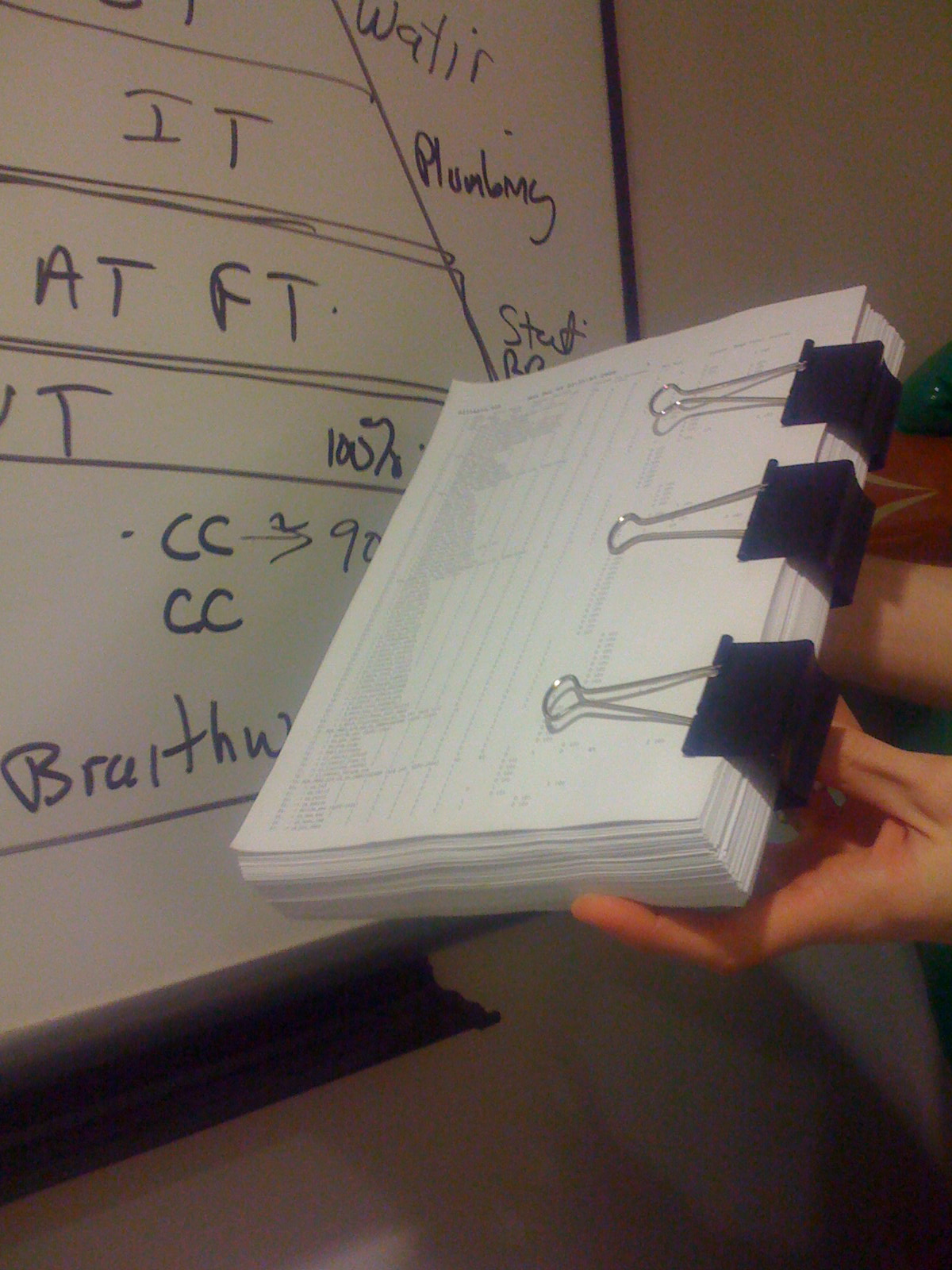Presented by Bob Martin in Tampa, Florida on 11 April 2012.
“Uranus is not a naked–eye object under any circumstances.”
- Copernicus’ motivation was religious, not scientific! Galileo looked at the phases of Venus to determine its orbit in relation to Sol.
Bob: How do you become unafraid of your code?
Audience guy: Change jobs.
Is anybody here good at estimating? (If anyone raises their hands, they’re lying.)
If you don’t care about the number of defects, I can get it done on any schedule you’d like!
What’s the matter here in Florida?
Objective-C! puke
“How many times per day do you put your hands in the life of some code written by some 22-year-old at three in the morning?”
“How many times do you put your life in the hands of an if statement…? Our civilisation depends on software, and that trend is doing nothing but increasing.”
“Sometime in the next decade, there will be an accident, and it will kill thousands of people, and it will be because of some software that was written by some 22-year-old at three in the morning. And the government will regulate us.”
The two main schools of philosophy in software development are: iterate slowly and throw out planning almost entirely, or, imitate other engineering fields.
We think of engineers as builders, but they don’t really build things. Engineers are specifiers. An architect is an engineer, but he creates the blueprints and diagrams, but not the house itself. This philosophy has dominated our industry ever since.
In conventional engineering, the build is much more expensive than design. In software, the reverse is true. The cost of the build step is basically nothing; the design is much more expenive. This changes the way you build things.
…digging the basement, filling the basement back in…
“Software doesn’t have a foundation! There’s no digging!”
Winston Royce’s paper set up waterfall as a strawman that he could tear down. Waterfall has been used as a serious model ever since.
We have forgotten that there is a software crisis.
Our software has defects. That is unprofessional.
Quality Assurance exists because we are not doing our jobs correctly. They run our software to find problems in it. We could do that…
- That is not the test plan. That is just the table of contents.
- Most of these tests could be done by a machine.
- If you are a professional, QA should hardly ever find anything.
- Finding a bug in the QA step should be cause for a good deal of reflection.
- The notion that we can do it right the first time is a fallacy.
- We need to be able to iterate, and that means automated tests.
- If the tests pass, ship it.
- If you don’t trust your tests, you’re doing it wrong.
- Manual testing and deployment are the number-one cause of this.
- Automated tests that take a long time also fall under this.
- Managers will ask you for committments.
- Everything now belongs to the commitment.
- Don’t make the commitment! Instead, come up with estimated ranges.
- If it’s perfect, x. If it takes a while, y. If everything goes wrong, z.
- “Will you try?” — “I’m already trying!”
- Rushing means you’re slowing down.
- If you’re a professional, you don’t rush.
The average agile sprint is about two weeks now, because that provides frequent feedback points. Every week is even better. The idea is that there should be no form of technical debt after a sprint – you should be ready to deploy.
The TDD cycle – as newbies envision it – doesn’t actually work, because you can’t get anything finished in a reasonable amount of time.
Uncle Bob has a blog post explaining this better than my notes could.
(This is where my laptop’s battery died. Please fork and add your own notes here.)

nice man.. thanks for writing this up.